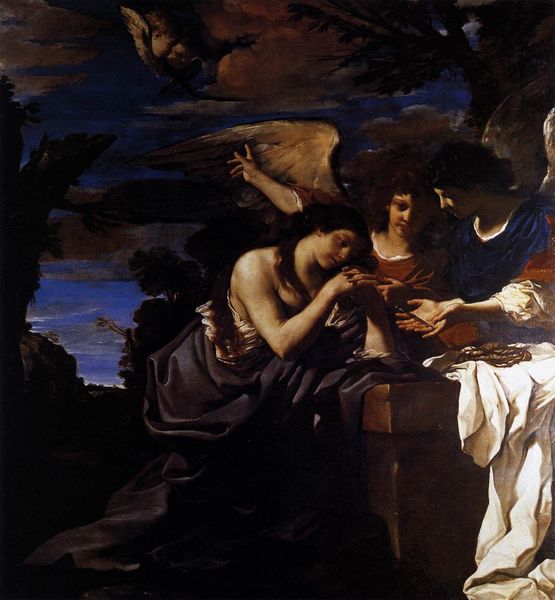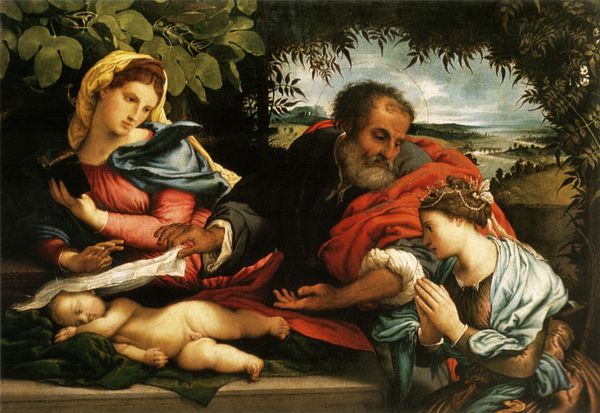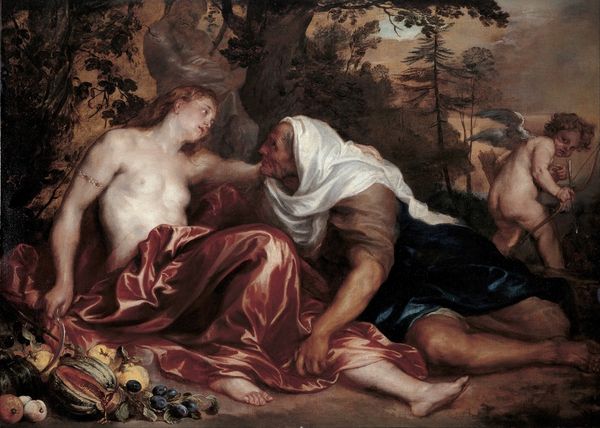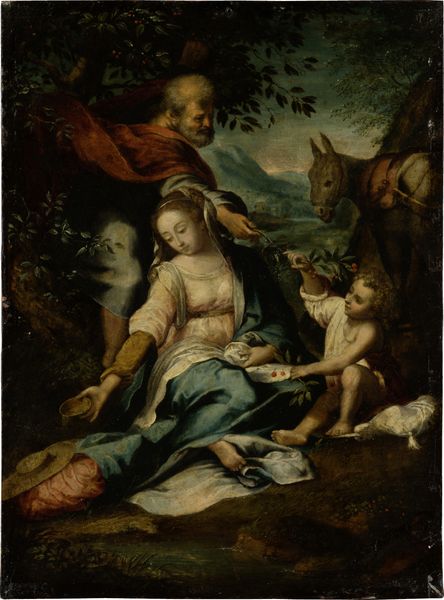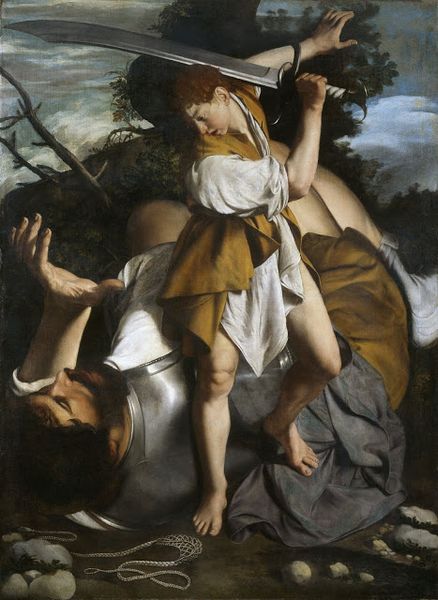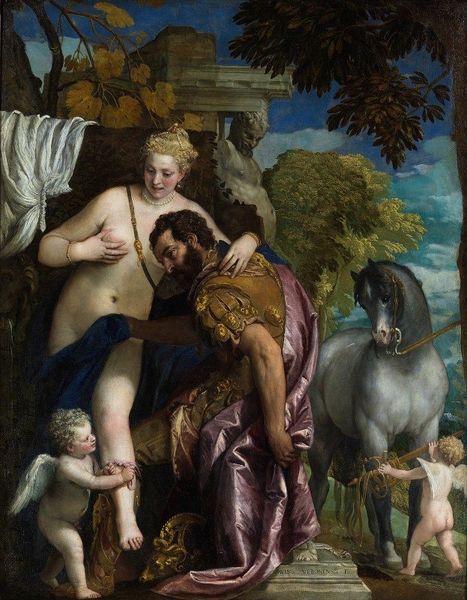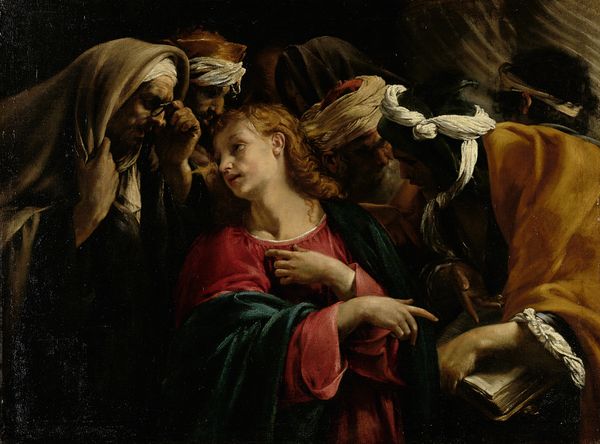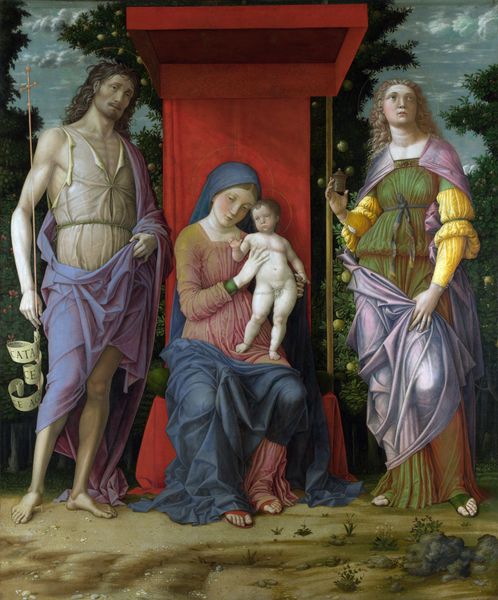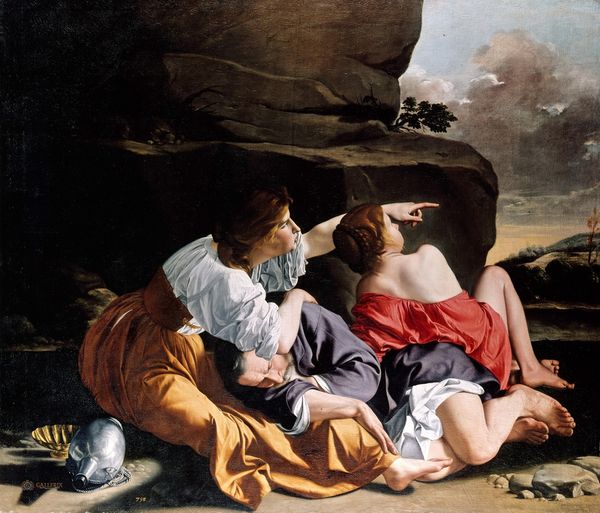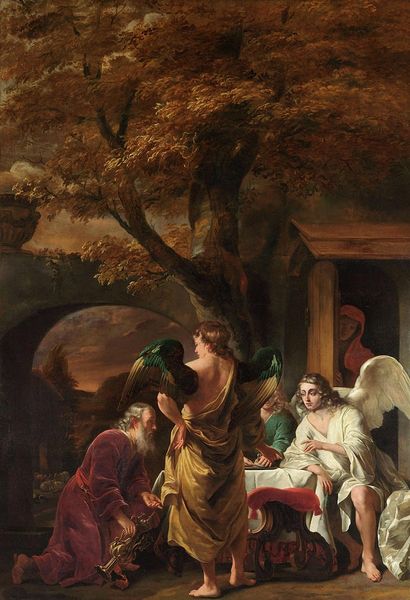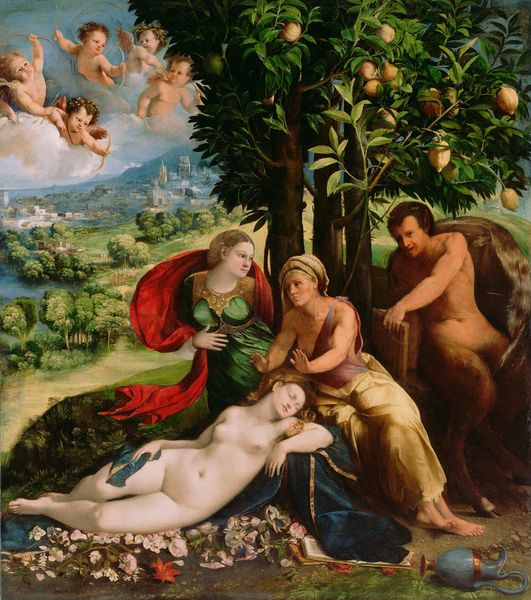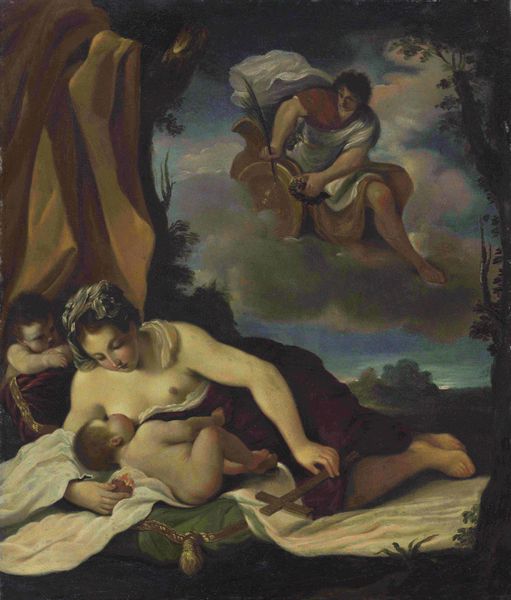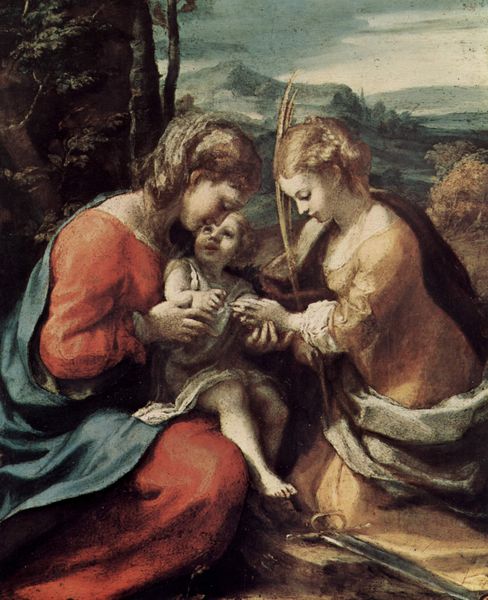
painting, oil-paint
#
narrative-art
#
baroque
#
painting
#
oil-paint
#
landscape
#
figuration
#
underpainting
#
italian-renaissance
Copyright: Public Domain: Artvee
Editor: Here we have Caravaggio’s *Rest on the Flight into Egypt* from about 1597, rendered in oil. There's a wonderful sense of peace; the figures are so realistically portrayed. I am drawn to the fact it isn’t idealized. What can we make of its particular interpretation of this Biblical scene? Curator: It’s fascinating to consider Caravaggio's choices in terms of labor and materials. Notice the intense contrast, achieved through innovative techniques in oil paint layering; How does this dramatic effect relate to the broader social and economic realities of the time, perhaps even highlighting the cost of pigments and the skills required to manipulate them? Editor: That's a fresh way of thinking about it. I suppose I usually just consider the symbolism, rather than the labor required. Curator: Exactly. It's worth examining how his process might challenge conventional hierarchies that placed "high art" above other forms of making. The figures themselves - how their clothes, and even bare feet are rendered, speaks volumes. The materiality and skill required would elevate this, in a way making a comment on craftsmanship. What elements catch your eye as signs of this intersection between skill and material? Editor: I think I notice that especially in the angel's wings – the way they catch the light almost feels sculpted and I also agree about the fabrics and detailed musical notes. I suppose there is some kind of performance being presented in its creation. I will definitely approach Baroque art with new consideration of this labour and materialism, and the class elements within. Curator: Indeed, thinking about how artistic skill and material consumption converge really unlocks a deeper understanding of art history. Hopefully it prompts a greater consideration of what really stands before our eyes.
Comments
No comments
Be the first to comment and join the conversation on the ultimate creative platform.
